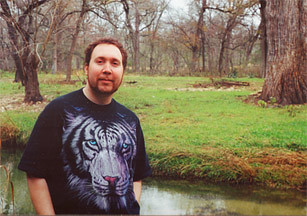Phillies make analytics, game experience add up to winning formula
Phillies #Phillies

PHILADELPHIA — When Aaron Judge griped about the Yankees’ analytics department at season’s end, the team’s $360-million slugger ultimately took his grievances to Hal Steinbrenner.
It’s not a new complaint, or unique to the Yankees. Baseball’s 21st century tussle regarding how much data is just the right amount. With so much information available, who decides what’s enough?
Maybe Judge should have dialed up the Phillies instead. And more specifically, their hitting coach Kevin Long, a Bronx veteran himself.
Because the Phillies seem to have struck a successful balance between cutting-edge analytics and an analog mindset, sifting through the numbers like they’re panning for gold, separating the valuable nuggets from the buckets of gravel. And whatever you want to call their method — be it old-fashioned, or stripped-down, or some hi-tech hybrid of everything that filters down from the front office to clubhouse — the Phillies have discovered a process that works for them.
“There’s a roomful of information that we get now, and I think the greatest coaches, what they do is they take this roomful of information, they put it in a little thimble to hand to the player,” Phillies manager Rob Thomson said before Tuesday night’s Game 2 of the NLCS. “And just keep it as simple as possible so they can go up to the plate, they can put their body on autopilot and just hit. That’s what they need to do.”
Long, 56, is the Phillies’ guy with the thimble, just like he was for the Yankees, Mets and Nationals. He’s helped all four of these clubs hit their way to the World Series, winning titles in the Bronx and D.C. And the Phillies are poised to get back to the Fall Classic for the second consecutive year, thanks to a bulldozer approach at the plate, counseled by Long’s proven track record.
Entering Tuesday, the Phillies had blasted 16 home runs through seven playoff games, including a dozen over the previous three-game span, the most by a team during a period of that length. Their plus-12 homer differential (16-4) over their opponents was the largest for a seven-game stretch in postseason history, according to Elias.
While there is no magic formula for clearing the fence with such frequency, consider the power surge a byproduct of doing a lot of stuff right, along with going in with an attack-mode game plan and not missing mistakes. Overall, the Phillies were burying the rest of the playoff field in just about every offensive category, with a .905 OPS that was nearly 100 points higher than the next closest team, the Diamondbacks.
“I think here is a little different,” Trea Turner said of the Phillies’ hitting prep and strategy. “It’s a little old school. It’s less information in a good way. We have all the information. We have everything we need, but we’ve got a lineup of guys that just want to hit and play baseball. I think that’s refreshing as well. Sometimes you can get caught up a lot in the video or the numbers and different things, and I think throughout the season, we’ve kind of learned what we like and what we don’t like. We’re doing the same thing we’ve kind of done all year. . . . We’re keeping it pretty simple.”
What does simple look like? Long hanging around the cage with his players, chatting about individual experiences against that night’s pitchers, relaying the pertinent data from upstairs — whichever parts any hitter might want — and coming up with a team-wide approach tailored for each member of the lineup.
Some meetings could stretch for longer than a half hour. Others might last only five minutes. And Long, a cage-rat himself, fosters that sort of collegial spot, which the Phillies seem to thrive on.
“I try to create a very, positive energetic place where they can go and we can kind of have fun,” Long said. “Almost like a bar atmosphere. It’s a safe place for them. This group is like many of the others I’ve had — they love to come to the cages, they love to talk hitting. There’s guys that come down there not even to hit, just to hang out. That’s what I want that vibe to be. A lot of music, a lot of laughter, a lot of storytelling.”
Hitting is hard. The challenge for teams, and coaches like Long, is coming up with ways to make it easier, if only by a tiny fraction. That’s why front offices churn out data, trying to uncover any possible competitive edge by relentlessly crunching numbers. Or in Long’s case, nurturing the mental side to unholster the talent, which may be more crucial in the big picture.
“I think Kevin’s biggest strength is how he communicates with the players, how much the players trust him,” Thomson said. “I think a player could go into the cage and have the worst cage session that he’s ever had in his life, and walk out of the cage — just because of Kevin — and feel like he can go hit. Because that’s how he makes a guy feel. He gives our hitters a great deal of confidence.”
Ask Long if considers himself “old school” and he laughs, saying he’s gotta be due to the fact he’s been around all this time. Loves drills, swears by the hitting tee, which Long says some organizations have eliminated.
“Shoot, if we banned tees here,” Long said, “There might be a mutiny.”
Or what’s going on in the Bronx lately.

David Lennon is an award-winning columnist, a voter for baseball’s Hall of Fame and has covered six no-hitters, including two perfect games.